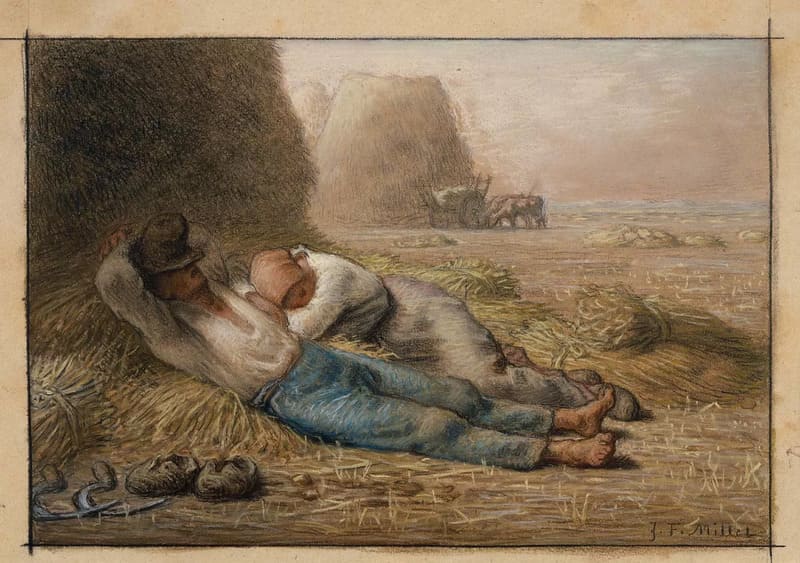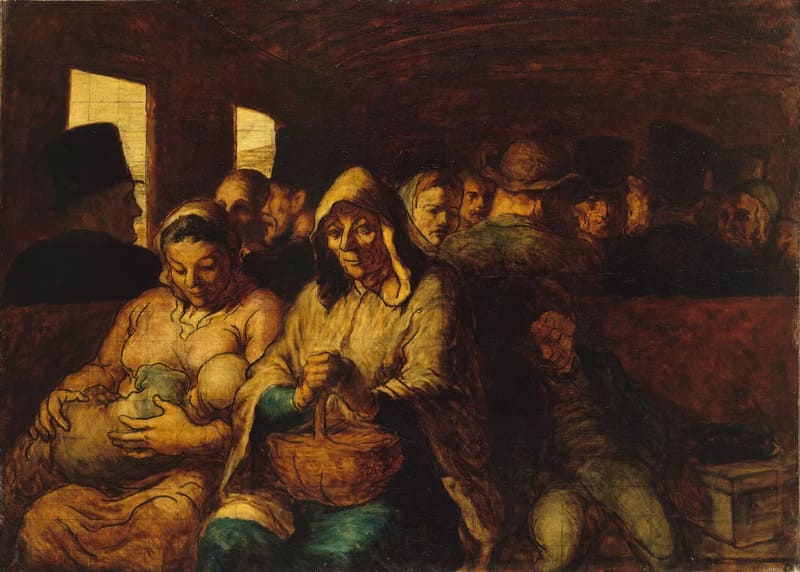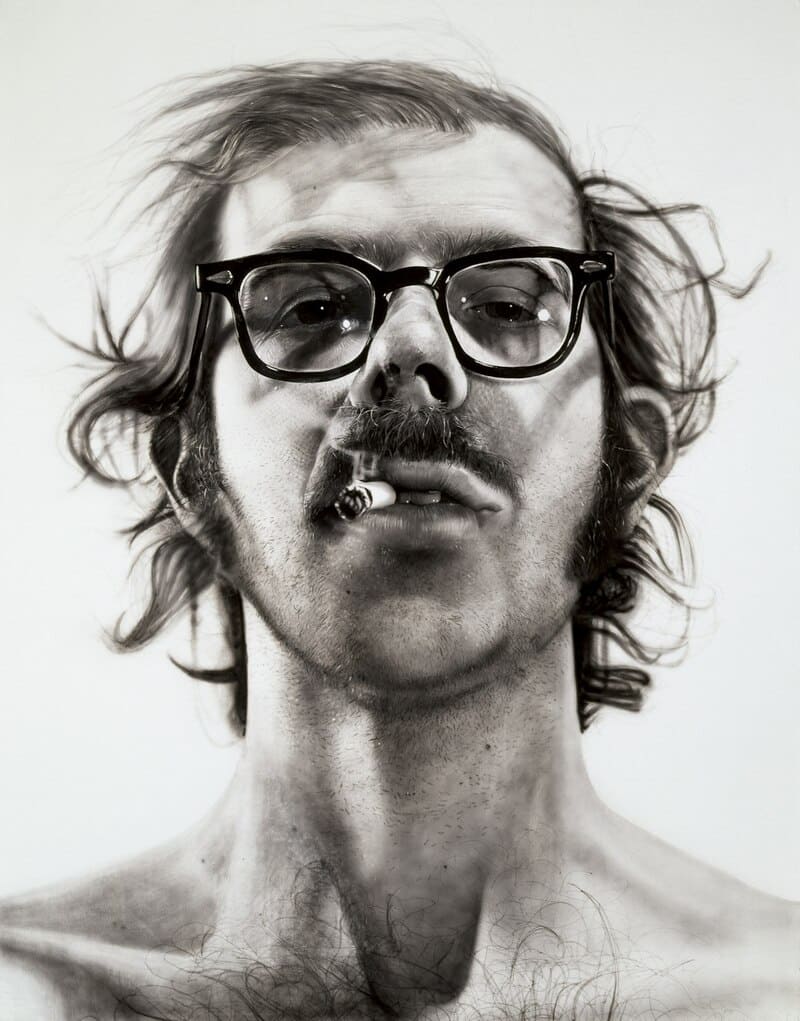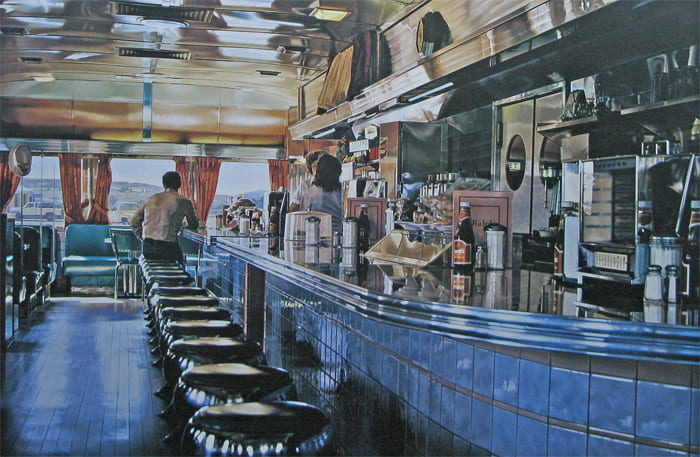What is it that is so fascinating about hyperrealism?
Will it be the details? The textures? The colors?
Surely each person will have their own opinion about it and, today, I would like to share mine with you, since it is an artistic movement that has impacted my works throughout much of my artistic career.
But first I feel that we must definitively distinguish Hyperrealism from Realism.
Realism: A Direct Look at Everyday Life
Realism, which emerged in France in the mid-19th century, was born as a reaction against the idealism and romanticism that had dominated art until then. Tired of exaggerated subjectivism, realists sought a more direct and sincere representation of everyday life, moving away from the sentimental and exotic to focus on what was close: routine, work and the social reality of the moment.
This movement not only reflected life as it was, but did so from a critical and actively political stance. In a context of upheaval in all sectors of life, such as the Industrial Revolution and the proclamation of the Republic in 1848, realism emerged as a tool to denounce social injustices and connect with the working classes.
The greatest references of realism in painting
The painters who best knew how to reflect the principles of realism in their paintings were Gustave Courbet, Jean-François Millet and Honoré Daumier.
These artists, among others, engaged with the reality of their time, portraying peasants and workers with a truthfulness that challenged traditional artistic norms.
Far from idealizing life, realists showed it as it was, without embellishment. Its objective was to capture the essence of everyday life and transform the viewer’s perception through a faithful and objective representation of reality. Although beauty was not his primary goal, his works possess an emotional force that arises from their authenticity and their ability to connect with the common experiences of humanity.
The influence of realism extended beyond painting, leaving a significant mark on literature and other art forms. Furthermore, his focus on meticulous observation and faithful representation of reality was related to positivist thought of the time, which sought to understand the world through reason and science.
This movement manifested itself in a variety of subjects, from rural landscapes to urban scenes, through intimate and family portraits. Realist artists, in their desire to capture the vitality and immediacy of life, laid the foundation for later movements such as Impressionism, which would take the exploration of light and color even further.
Below we can enjoy some of the most outstanding works of the three mentioned artists:
Gustave Courbet

Jean-François Millet

Honoré Daumier

Realism not only invites us to see the world with new eyes, but also reminds us of the importance of facing reality with courage, always seeking the truth, no matter how crude it may be.
Hyperrealism: The Search for Perfect Reality
Hyperrealism, also known as radical realism, is an artistic movement that emerged in the late 1960s as an evolution of photorealism. This style, which stands out for its meticulous precision, seeks to represent reality with a fidelity superior to that of a photograph, using techniques and tools typical of photographic manipulation. Although it is often debated whether it is a technique or an art in itself, the truth is that hyperrealism has marked a milestone in the history of contemporary art.
The origin of hyperrealism is found in the American painting tradition, where artists such as Chuck Close y Audrey Flack became pioneers of the movement.
Over time, other artists such as Ralph Goings, Robert Bechtle, Richard Estes and Antonio López joined in, expanding the scope of hyperrealism to portraits, still lifes, urban landscapes and everyday scenes. Each of these artists has developed a unique style, but they all share the same obsession with detail and precision.
Hyperrealism not only seeks to replicate reality, but also explores the relationship between what is real and what is represented. Through an almost clinical approach, these artists eliminate any trace of emotion or subjectivity, offering a vision of the world that, although it may seem devoid of life, reflects a perfection that escapes mere photography. In fact, hyperrealism surpasses photography by hiding its errors and focusing on an accurate and polished representation of reality.
Hyperrealistic works are characterized by their astonishing level of detail and the use of photographic techniques such as lighting and perspective to create the illusion of three-dimensionality. However, despite its objective appearance, hyperrealism also raises questions about the nature of reality and human perception, reminding us that all representation is ultimately an interpretation of the world around us.
Outstanding works of hyperrealism
In an Art History publication, seven pieces are shown that represent the excellence of the movement, of which I wanted to share some of them in this entry and add new ones:
“Big Self-Portrait” by Chuck Close

This monumental work stands out for its impressive size and extraordinary level of detail. This self-portrait established Chuck Close as a key figure of Hyperrealism.
“Phone Booths” by Richard Estes

Richard Estes captures the essence of urban landscapes with impressive precision in this work. His faithful depiction of telephone booths and city life is a testament to the power of Hyperrealism to reproduce reality with remarkable accuracy.
“Ralph’s Diner” by Ralph Goings

Goings immortalizes the daily life of a typical American diner in this painting. The work stands out for its meticulous attention to detail, from reflections in the glass to nuances of light, underscoring the artist’s technical skill.
“Bombay and Marbles” by Pedro Campos

Pedro Campos takes hyperrealism to another level. His oil paintings on canvas of common objects – such as aluminum cans, marbles, fruits or glass containers – have such a level of detail that they even compete with the realism of photographs.
If no one tells you that you are looking at a painting, you will surely think that it is a top-level photograph.
I invite you to be amazed in its gallery.
Final words
Hyperrealism is more than a simple copy of reality; It is a challenge to our senses, an invitation to question what we consider real and a celebration of the technical mastery that only a few artists manage to achieve.
In the end, hyperrealism is not content with imitating reality: it perfects it, transforms it and, in that process, allows us to see the world with new eyes.
Have a lovely day.
